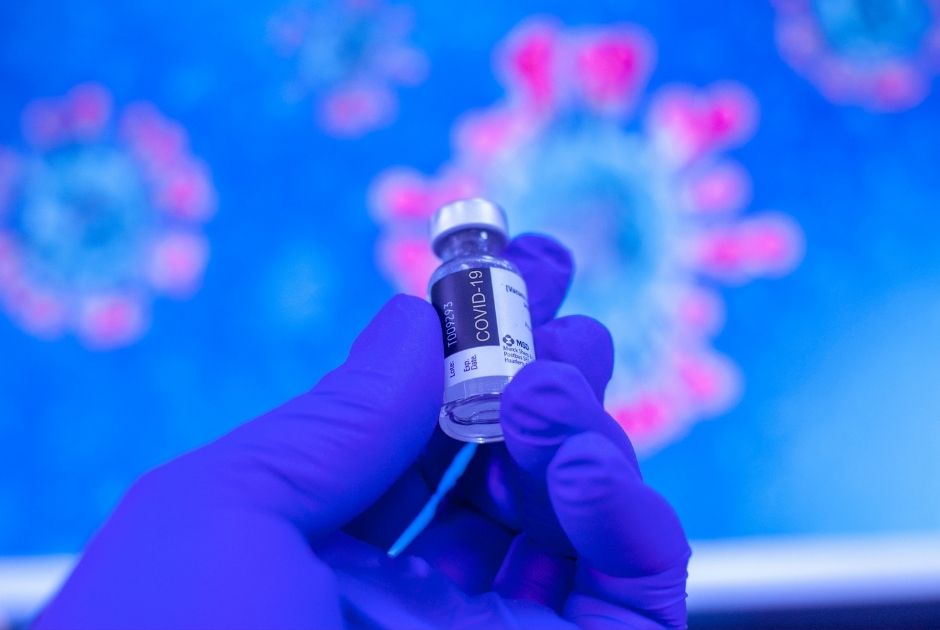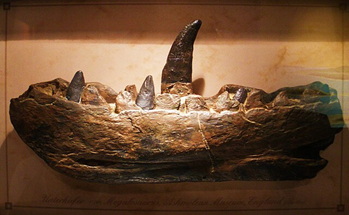A brief overview of the history of vaccination in Oxford
The remarkable success of the Oxford AstraZeneca vaccine’s rapid development, testing and rollout presents a moment in time to look briefly back at the history of vaccination in Oxford. Since the pioneering works of Edward Jenner in the 18th century with smallpox vaccination and the social and economic issues that ensued, clear correlations can be seen to those same issues being encountered today with the COVID 19 pandemic.
Many of the issues encountered in the 18th century are currently familiar. They included inoculation resistance, misinformation and conspiracy theories, quarantine and isolation, reporting and surveillance, vaccine passports (a requirement to work) and incentivisation programmes.
Early inoculation
Edward Jenner is well known around the world for his innovative contribution to inoculation and the ultimate eradication of smallpox. Smallpox, the deadliest of all eighteenth-century diseases, was a terrible disease that spread from person to person without discrimination. It was widely feared, killing approximately 30% of those infected. After the initial symptoms of headache, muscle aches, exhaustion and fever, the body would become entirely covered in a rash, including inside the eyes, earning smallpox the epithet ‘Speckled Monster’. Jenner’s work is widely regarded as the foundation of immunology although its origins were in non-white cultures including China, Africa and later Turkey. Many people’s lives were saved from death and horrendous disfigurement thanks to Jenner’s remarkable work and the later developments from his endeavours.
His work started with Sarah Nelmes, a dairy maid, who had become infected with cowpox. On 14 May 1796, Jenner removed matter from pustules on her hand which he then used to inoculate an eight-year-old boy (James Phipps) who then also developed pustules but quickly recovered. On 1 July, Jenner performed the second stage of the experiment by inoculating James with smallpox. His aim was to see if the cowpox vaccine worked. This was long before medical ethics; the risk Jenner took with the boy’s life today seems unacceptable.
Vaccinating Oxford
In 1796 Finmere villagers were among the first to benefit from Edward Jenner’s smallpox vaccination and Robert Holt the local rector (among others) became an enthusiastic vaccinator. Holt’s achievements are noteworthy as he was untrained in medicine. His work is an early example of overcoming inoculation resistance as his parishioners trusted him and there was success in the majority of cases. Holt supplied other clergymen and small village doctors with vaccine and was a leader in dissemination. However, not the most sanitary of procedures were always employed and secondary infections could occur which led, in time, to villagers’ refusals. Holt recognised the experimental nature of the procedure and robustly documented his results; this work earned him considerable praise within the medical profession.
Oxford practiced inoculation for the public and in 1763 Daniel Sutton, the son of a county surgeon, devised his own method of inoculation known as Sutton’s variolations and the ‘Suttonian’. His ambition was to make inoculation accessible, and in a less costly form. He set up clinics in many villages and towns across England including the Kings Arms in Oxford which was open for three hours every Saturday and locals were encouraged to be inoculated with a ‘Pint and a Poke’. Over 1000 people were successfully inoculated. Vaccination was quickly adopted and many notable reviewers of Jenner’s research by professors and surgeons at the University of Oxford. The Oxford Journal ran an advertisement for a servant that was required to have the smallpox vaccination for employment, evidencing that the vaccination had been incorporated into daily life.
Jenner’s inoculation became known as ‘vaccination’ in competition with Daniel Sutton’s ‘variolation’ in which smallpox infection itself was used for inoculation. Rivalry continued after both their deaths until Parliament in 1840 outlawed Sutton’s inoculation. An experiment conducted by Princess Caroline and sponsored by Sir Hans Sloane offered condemned prisoners in Newgate gaol to be inoculated in return for a pardon granted by George I. Unsurprisingly, the question always posed with early inoculation was, ‘What’s the risk?’, but with prisoners on death row, it was deemed that the risk from inoculation was low in comparison with the certainty of death! There is evidence that prisoners, both male and female ‘took the risk’.
Another poignant example of the impact of smallpox on employment prospects in a village close to Oxfordshire: Our informant is Henry Purefoy, gentleman landowner at Shalstone whose diaries and letters from the 1730s and 1740s survive. Smallpox struck the area several times in 1736 and 1737:
“Our town of Buckingham is grievously visited with the small pox, the last I heard of it was in threescore houses, so forasmuch as it is universall hope it will soon be over. I thank God our Shalstone folks have escaped it hitherto. At present wee have the small pox in ye parish which put us in some fear …The Purefoys insisted that their servants were free of the dreaded disease: If [those applying to be servants] haven’t had the Small Pox they must set their Hands to a paper to provide for ’emselves in such case because wee have never had it ourselves.” Servants had to sign a contract with Henry’s mother, Elizabeth. In 1754, Priscilla Matthews, “a meniall servant,” was to receive four pounds a year. Unless, “at any time of her said service [she] be visited with the Distemper of the Small Pox.” If that happened, Priscilla was to be dismissed without compensation.
Stopping the spread
Quarantine and isolation have long been known as effective methods of preventing the spread of infectious disease. Prior to the introduction of inoculation, it was the only effective method that communities had of protecting their families from infectious diseases that spread at an alarming rate through the population. Although the concept was crystal-clear, implementation was never easy. For instance, after the promulgation of the first Quarantine Act (1710), the protective practices in England remained unsystematic for many years. In Oxford, as in other parts of the country, quarantine and isolation have been widely practiced during such times. In rural areas, communities have been isolated for considerable periods of time, enduring real hardship and financial deprivation. The Derbyshire village of Eyam is a well-known example.
In 1848 public vaccinators were appointed in Oxford to increase the uptake of vaccinations with everyone born within three months. Lists of everyone in the neighbourhood were drawn up and they were visited and encouraged to be vaccinated. Vaccination became one of the first mechanisms for the state to report and track citizens. Mandatory vaccination laws were introduced in 1853 with large fines which promoted public backlash. Failure to have your child vaccinated would result in a fine of £1, equivalent to £3,500 today.
Doctors or Public Vaccinators could issue medical certificates of exemption. There was medical oversight across the country via Public Vaccinators’ medical records to track citizens and therefore, increase surveillance. In 1898 Parliament passed the Conscientious Objection Clause allowing those who disagreed with vaccination on moral grounds to be exempt. This was perceived by the growing ‘anti-vac’ movements across the country to be a major success. In 1907 there was a revision to the law which made it even easier to gain exemption and the percentage of objectors rose to 25% nationally. This increase in objectors included working class females as it was easier to apply under the revised law and illustrates their distrust of medical practice and stage regulations.
20th century epidemic encounters
Waldemar Mordecai Haffkine and his close association with the Acland family of Oxford was brought to light in a recent BBC news article (Gunter and Pandey) characterised Haffine as “the vaccine pioneer the world forgot”. Waldemar Haffine created vaccines for cholera and bubonic plague in India from 1897 – 1925. Unfortunately, his mishandling of one vial meant his contribution to the fight against infectious diseases has, until recently, been overlooked. Haffkine’s friendship with Sir Henry Acland of Oxford and their common interest in infectious diseases subsequently led to inoculations against both cholera and bubonic plague.
Oxford AstraZeneca vaccine
The astonishing account of the combined achievements of the Oxford Vaccine Group and the Jenner Institute which contributed significantly to the global effort to stop the spread of COVID 19 are now widely acknowledged, well documented and in the public consciousness.
Professor Dame Sarah Gilbert of Vaccinology at the Jenner Institute within the University of Oxford and Dr Catherine Green, Associate Professor in Chromosome Dynamics, at the Welcome Centre for Human Genetics and Head of Oxford’s University’s Clinical Bio Manufacturing Facility and their teams worked tirelessly to design, make and test a vaccine with unprecedented speed and in record time. It was not a race against other scientists making other vaccines, instead, it was a race against the devastating virus that took millions of lives, ruined livelihoods, emptied schools, kept us apart from people we loved and closed down entire societies.
The History of Science Museum, University of Oxford
In 2020, the artist Luke Jerram tested positive for COVID-19 and during his recovery he was inspired to create the beautiful, single nanoparticle of the AstraZeneca vaccine sculpted in glass marking the ten millionth vaccination in the UK. The sculpture is on display in the entrance to the History of Science Museum, University of Oxford. The sculpture is one million times the actual size of the nanoparticle. Through the medium of sculpture, the combined beauty of art and science are transparently celebrated to create a unique symbol of our time and place in history.
Written and researched by MOX volunteer Beverly Minette.
Want to write your own Oxford-inspired post? Sign up as a volunteer blogger.
Sources for this piece:
Paula Larsson and Olivia Hammond, Founding Directors of Uncomfortable Oxford: Talk on ‘Public Health and Public Houses A History of Infectious Disease Prevention’
Vaxxers Gilbert/Green Hodder & Stoughton 2021
The History of Science Museum – University of Oxford



